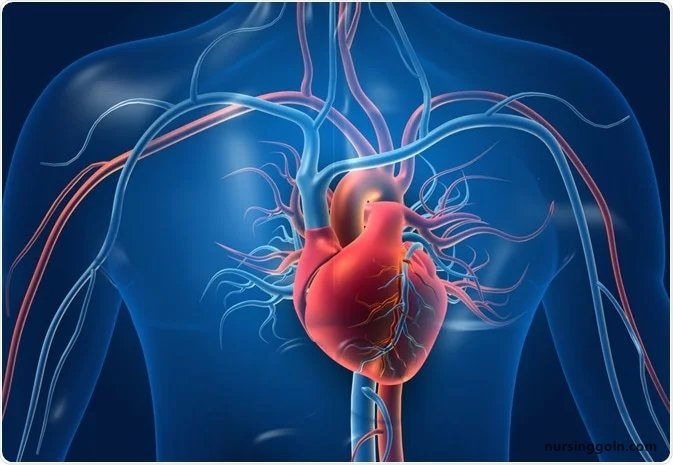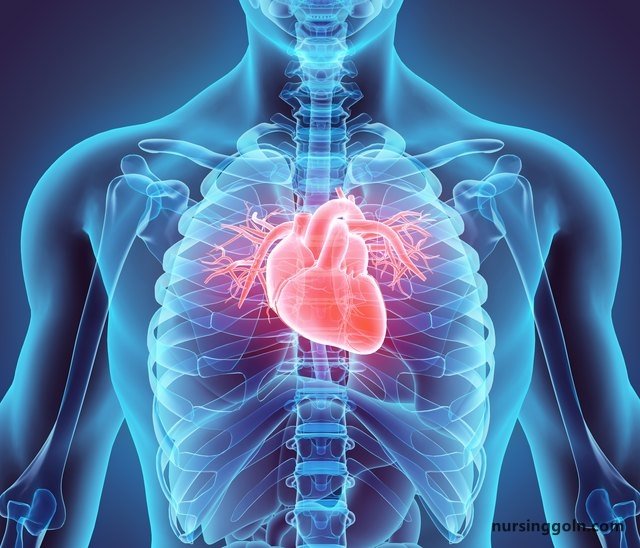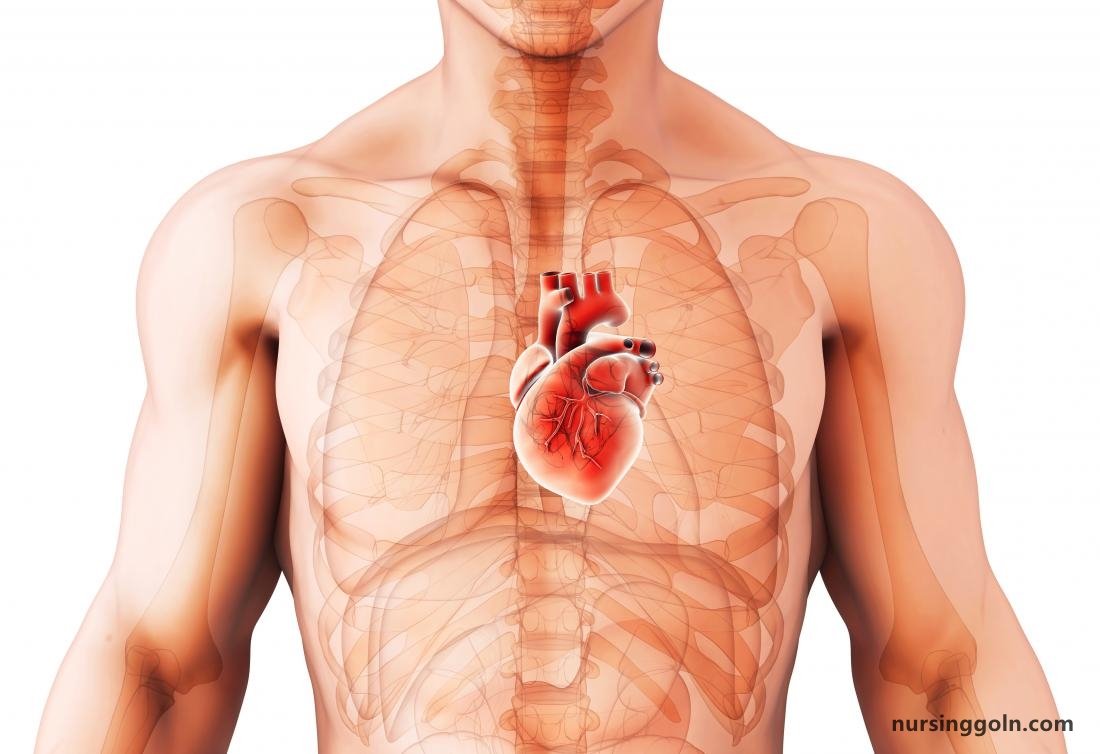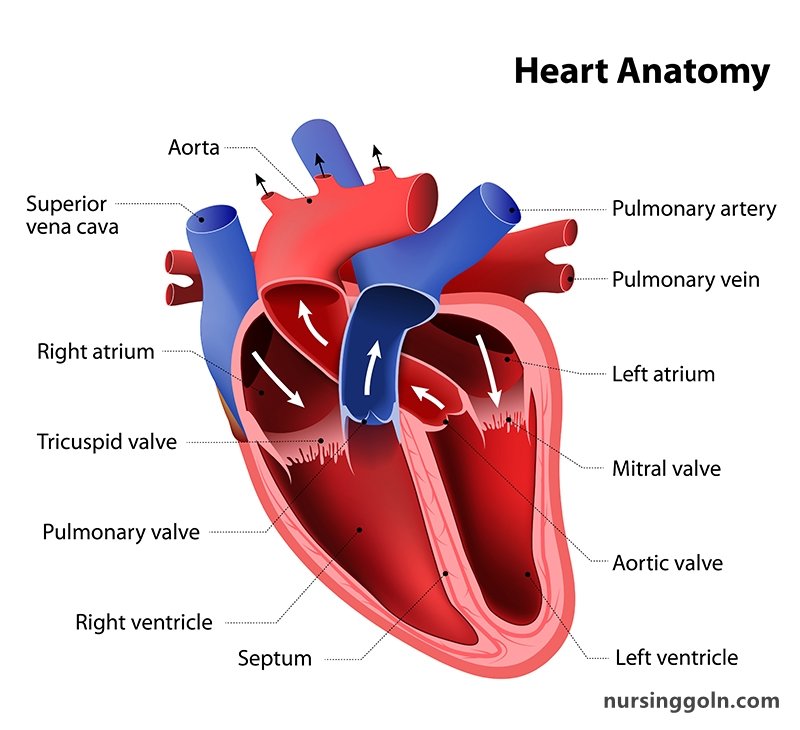Today our topic of discussion is ” Cardiac Cycle “. At the core of our cardiovascular system lies the heart, a diligent orchestrator of a rhythmic symphony called the cardiac cycle. With every beat, the heart undergoes a meticulous sequence of events, ensuring the efficient circulation of life-giving blood. This article explores the fascinating intricacies of the cardiac cycle, the heart’s ceaseless dance of contraction and relaxation.

Cardiac Cycle – The Cardiovascular System: The Heart
1. Understanding the Basics
The cardiac cycle comprises all the events associated with a heartbeat, including the stages of systole (contraction) and diastole (relaxation). This cycle ensures that blood is pumped from the heart to the systemic tissues and lungs and back again.
2. Phases of the Cardiac Cycle
a. Atrial Systole:
- Initiation: Triggered by the sinoatrial (SA) node, electrical impulses stimulate atrial contraction.
- Outcome: Atria contract and push blood into the ventricles, filling them.
b. Isovolumetric Ventricular Contraction:
- Initiation: Following atrial systole, the ventricles contain the maximum volume of blood, termed end-diastolic volume (EDV).
- Outcome: As ventricles begin to contract, intraventricular pressure rises, causing the atrioventricular (AV) valves to snap shut, creating the first heart sound, “lub.”
c. Ventricular Ejection:
- Initiation: With continued contraction, intraventricular pressure exceeds the pressure in the large arteries exiting the heart.
- Outcome: Semilunar valves open, allowing blood to be ejected into the aorta and pulmonary artery.

d. Isovolumetric Ventricular Relaxation:
- Initiation: After ejection, the ventricles start to relax, and intraventricular pressure drops.
- Outcome: As pressure falls below that in the aorta and pulmonary artery, the semilunar valves close, producing the second heart sound, “dub.”
e. Ventricular Filling:
- Initiation: With relaxed ventricles, the pressure inside them is lower than in the atria.
- Outcome: AV valves open, and blood passively flows from the atria to the ventricles. This phase includes rapid, reduced, and atrial filling stages.
3. Pressure and Volume Changes
Throughout the cardiac cycle, the heart’s chambers experience changes in volume and pressure:
- Atrial Pressure: Peaks during atrial systole and drops during atrial diastole.
- Ventricular Volume: Reaches its maximum (EDV) just before ventricular systole and its minimum (end-systolic volume or ESV) at the end of ventricular systole.
- Ventricular Pressure: Rises during ventricular systole and falls during diastole.

4. The Wiggers Diagram
The Wiggers diagram offers a visual representation of the cardiac-cycle, plotting changes in pressure and volume against time. It integrates ECG readings, heart sounds, and ventricular and atrial activities, providing a comprehensive view of the cycle’s dynamics.
5. Cardiac Output and the Cardiac Cycle
Cardiac output, the volume of blood pumped by a ventricle per minute, is intrinsically linked to the cardiac-cycle. It’s the product of stroke volume (the difference between EDV and ESV) and heart rate. Thus, changes in the cycle’s duration and efficiency directly influence cardiac output.
6. Regulatory Factors of the Cardiac Cycle
Several internal and external factors modulate the cardiac-cycle’s phases:
a. Autonomic Nervous System: The sympathetic system increases heart rate and force of contraction, while the parasympathetic system slows down the heart rate. b. Hormonal Influences: Adrenaline and thyroid hormones can alter heart rate and force of contraction. c. Physical and Emotional Factors: Physical exertion, temperature, or emotional states like stress can impact the cycle.

7. Clinical Relevance of the Cardiac Cycle
Understanding the cardiac cycle is pivotal in diagnosing and treating cardiovascular diseases. For instance:
- Heart Murmurs: Abnormal sounds during the cardiac-cycle often indicate valve malfunctions.
- Arrhythmias: Irregularities in the cardiac cycle rhythm can signal electrical conduction issues.
- Heart Failures: Inefficient cardiac cycles, where the heart cannot pump sufficient blood, may indicate heart muscle weaknesses.
8. Cardiac Innovations and The Cardiac Cycle
Modern medicine continually seeks ways to optimize the cardiac cycle, especially in compromised hearts:
- Pacemakers: Devices that electrically stimulate the heart, ensuring a regular rhythm.
- Valve Replacements: For patients with dysfunctional heart valves, replacements can restore a more efficient cardiac cycle.

Conclusion
The cardiac-cycle, a meticulously coordinated series of events, encapsulates the heart’s relentless dedication to sustaining life. It’s a dance of pressures, volumes, and electrical impulses, seamlessly synchronized. Appreciating its intricacies underscores the importance of heart health and the profound interconnectedness of the body’s systems. As we continue to unlock its secrets, our respect for this marvel of biological engineering only deepens.
Read more:
